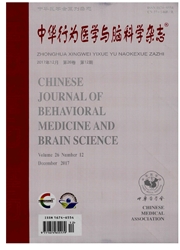

 中文摘要:
中文摘要:
目的通过观察自幼年至老年阶段不同月龄SD人鼠的行为学实验变化,评价增龄与学习、记忆功能之间的关系。方法雄性SD大鼠84只,分别为1月龄16只、3月龄16只、6月龄20只、18月龄19只和24月龄13只,分别进行Morris水迷宫和通道式水迷宫实验两种行为学实验。结果1月龄至6月龄大鼠的水迷宫实验成绩逐步提高,6月龄大鼠的逃避潜伏期和游泳距离最短,后3d的逃避潜伏期分别为(23.22±16.62)s、(11.59±8.51)s、(9.66±5.63)s,游泳距离分别为(596.83±443.18)cm、(254.39±218.75)cm、(229.80±128.00)cm;进入盲端的错误反应次数最少,与其他各组相比,均差异有显著性;而6月龄以后大鼠的水迷宫实验成绩缓慢下降,至24月龄时成绩与1月龄相似。结论大鼠的学习、记忆能力在6月龄之前呈现逐渐增强趋势,6月龄时达到最高点,以后缓慢下降,至24月龄时降至1月龄水平。
 英文摘要:
英文摘要:
Objective To observe the changes of behavior from infancy to agedness Sprague Dawley rats, and correlate age-increasing with learning and memory ability. Methods 84 male Sprague Dawley rats were studied: aged 1 month (n=16), 3 months (n=16) , 6 months (n=20) , 18 months (n=19), and24 months ( n = 13). The rats were put through the Morris water maze test and the straight-channel maze test. Results Rats showed increasing improvement in the water maze test from 1 month to 6 inonths of age; 6-month-old rats had the shortest escape latency time and shortest swim distance, as well as the least number of errors in encountering blind ends. After 6 months of age performance began to deteriorate progressively, declining to that of a one-month-old rat at 24 months of age. Conclusion Learning and memory ability of rats shows incrbasing improvement from birth, reaching a peak at 6 months of age; from then it begins to suffer progressive deterioration, declining to that of a one-month-old rat at 24 months of age. Changes in the above-mentioned ability may be related to hippocampal synaptic development.
 同期刊论文项目
同期刊论文项目
 同项目期刊论文
同项目期刊论文
 期刊信息
期刊信息
